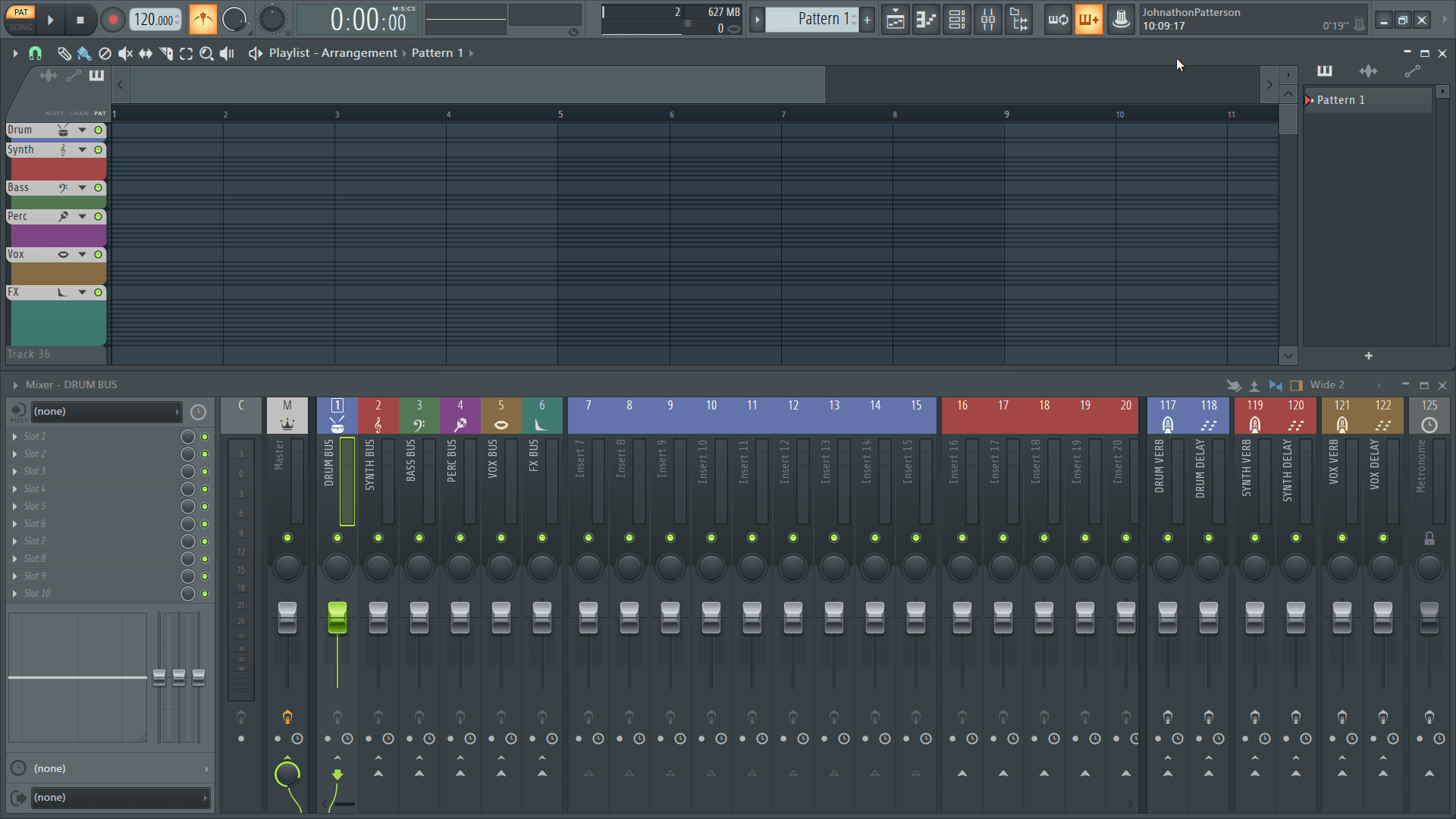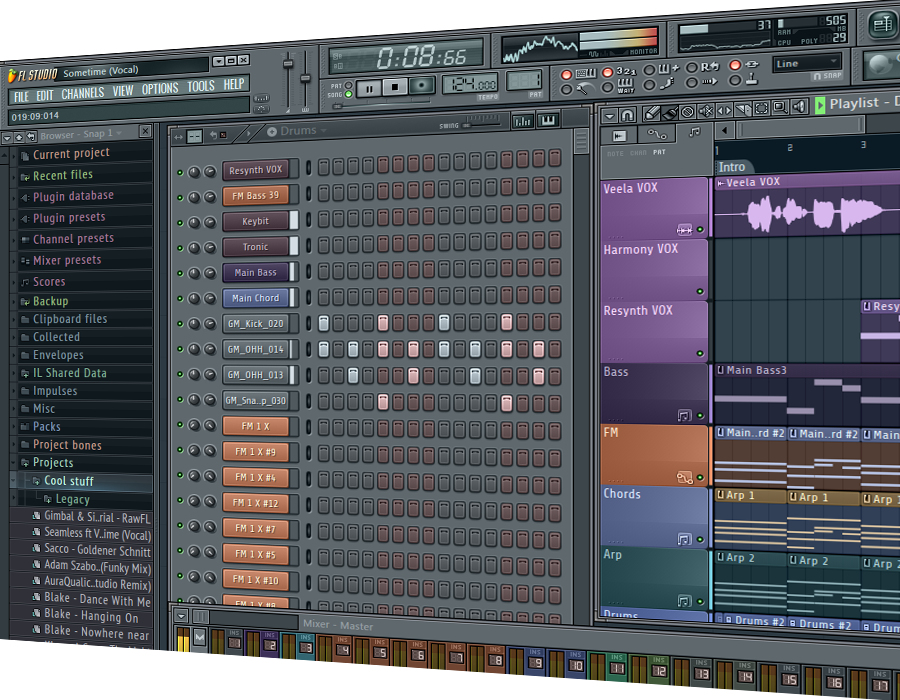You can create Aggregate Device to increase the number audio inputs and outputs available at the same time. You can also use an Aggregate Device if your application doesn't support separate input and output devices.
How to add plugins from Native Instruments in FL Studio. Whether you have Komplete 11+ or single Native Instruments plugins, this video will show you how to.
- FL Studio is a complete software music production environment or Digital Audio Workstation (DAW). Representing more than 20 years of innovative development it has everything you need in one package to compose, arrange, record, edit, mix and master professional quality music.
- FL Studio requires a 2 GHz AMD or Intel Pentium 3 CPU with full SSE1 support. It requires 2 GB of free disk space and 4 GB of RAM is recommended. The website states that 'the more powerful your CPU, the more instruments and FX you can run.' FL Studio processes audio using an internal 32-bit floating point engine.
- Where can you run this program? FL Studio runs on macOS 10.11 and Windows 8, or later versions. There are mobile options for iOS and Android, too. Is there a better alternative? Yes, if you’re a professional, LMMS is the best choice out there. Ableton Live offers similar features to FL Studio. Ardour and AudioTool are great free alternatives.
- FL Studio 20 will play any sample file (wav), generator (softsynth), VSTi and DXi) or midi instrument you feed it. You will be creating wav, mp3 or midi songs or loops only minutes after launching it. You can use FL Studio 20 as a scratchpad for your ideas or to produce completely mastered tracks ready for publication.
With Logic Pro, GarageBand, and MainStage, you can use a separate device for input and output. For example, you can use a USB microphone for input and the headphone jack of your Mac for output. Some applications not manufactured by Apple don't support separate input and output devices.
Set up an Aggregate Device
When you create an Aggregate Device, make sure to connect all external audio interfaces first.
- From the Finder, choose Go > Utilities. Open the Audio MIDI Setup application.
- Click the Add (+) button on the bottom-left corner in the Audio Devices window and chose Create Aggregate Device.
- A new Aggregate Device appears in the list on the left side of the window. To rename the device, double-click it.
- With the new Aggregate Device selected, enable the checkbox labeled 'Use' on the left side of the Audio Devices window. Do this for each device you want to include in the Aggregate Device. The order in which you check the boxes determines the order of the inputs and outputs in applications like Logic Pro and MainStage. For example, the first box you checked will be inputs one and two, the second box checked will be three and four, and so on.
The list on the right shows the currently connected audio devices and the number of input and output channels for each one.
- To use the clock of a device as the master clock for all the combined devices, choose the device from the Clock Source menu of the Aggregate Device. Choose the device with the most reliable clock.
- If your audio devices all work with word clock, connect them together using a word clock cable. Connect the cable from the device you designated as Clock Source to the input of each other device. Refer to your audio device product documentation for specific details.
- If any of your devices don't work with word clock, select the Drift Correction checkbox for any devices not designated clock master.
Use an Aggregate Device with Apple music creation software
- Open your application.
- Do the following depending on the application you're using:
- For Logic Pro, choose Logic Pro > Preferences > Audio, then select Devices.
- For GarageBand, choose GarageBand > Preferences > Audio.
- For MainStage, choose MainStage > Preferences > Audio.
- Choose the Aggregate Device from the Output Device pop-up menu. Logic Pro and GarageBand automatically set the Input Device to the match the selected output device, which you can change if you want to use a different input device. In MainStage, you must manually select the input device.
- In Logic Pro and MainStage, click Apply Changes.
GarageBand automatically switches to the new input device.
Use the Aggregate Device as the sound output of your Mac
When you set the Aggregate Device as the sound output for your Mac, sounds from other apps on your Mac play through the Aggregate Device. The Aggregate Device also becomes the System Setting option in the Output and Input Device menus of your Apple music creation apps.
- From the Finder, choose Go > Utilities. Open Audio MIDI Setup.
- Control-click the Aggregate Device in the left column, then choose 'Use this device for sound output' or 'Use this device for sound input.'
FL Studio Integration Tutorial
Mixed In Key Studio Edition analyzes your sample collection and enables you to match the perfect one-shot, loop, vocal or any other sample to your music production, remix or mashup.
It will instantly tell you the key, scale and tonality of any audio sample.
With Mixed In Key Studio Edition you can base compositions around a sample with total confidence. You’ll know exactly which notes are already present, giving you a great foundation for composition.
Here is a step-by-step user guide with some pro tips on how to get the most out of Mixed In Key Studio Edition in FL Studio.
1. Add an instance of Mixed In Key Studio Edition as an insert plugin to any audio, VST/AU instrument, sub mix or master buss channel’s insert slot.
After clicking on the insert slot in which you wish to insert Mixed In Key Studio Edition, select ‘More plugins…’.
Choose either AU or VST version of Mixed In Key Studio Edition from the plugin list (Note that AU is Mac only).
If Mixed In Key Studio Edition is not in the list, you will need to go to ‘FL Studio Plugin Manager’ and perform a rescan by pressing ‘Find Plugins’. You should then repeat the steps above.
2. Add an audio file to your audio channel. Alternatively, add a MIDI region to your VST/AU instrument channel or route audio to your sub mix/buss channel.
3. Playback the sound from your audio, VST/AU instrument or sub mix/buss channel.
Can You Use Fl Studio 11 On Mac Os
4. Mixed In Key Studio Edition shows you the key and scale results at the top of the plugin. In the center of the plugin you have the option of seeing key analysis by either note content or key probability. You can toggle between the two at any time.
Pro Tip
You can insert Mixed In Key Studio Edition on audio, VST/AU instrument, send, bus, sub-mix and master channels. This allows you to check the tonality of individual instruments or across the whole of your mix.
5. Audio analysis begins as soon as the plugin is opened. Press the PAUSE button to stop audio analysis but retain the results on screen. To restart analysis, press CAPTURE. To clear all captured data, press CLEAR.
To help Mixed In Key Studio Edition return the most accurate results, allow the sample to play back in its entirety while being captured.
Pro Tip
If you want to determine key and scale or note consistency between a group of samples, try capturing each audio sample consecutively on the same instance of Mixed In Key Studio Edition. You will see trends, common notes and key clashes in real-time.
6. In NOTES mode you view the notes that are being detected by Mixed In Key Studio Edition. The height of the bar above the note demonstrates how present the note being detected is.
These notes can be musical notes (ie from an instrument) or harmonics generated within the audio being played.

Above the notes you will see the key results, which include a root note and accompanying scale. The result of Eb Major 100% means that notes within the Eb Major scale would work well with this audio.

7. Results from Mixed In Key Studio Edition can be viewed in either Flat, Sharp or Camelot notation.
Fl Studio 11 Mac
Pro Tip
Viewing the results in Camelot notation helps you to bridge the gap between DJing and music production. Whether organizing loops and one-shots to enhance your sample library, or using on the fly to compose full tracks, Mixed In Key Studio Edition gives you all the data you need to make informed decisions on notes, keys and scales.
Inconclusive results

The key and scale results displayed can vary for a number of reasons. In some cases the key and scale results will appear inconclusive or be a mix of results.
This can be due to audio that is not exactly Major or Minor, or the harmonic content of the audio being analyzed.
If the KEYS results are inconclusive, take a look at the NOTES data and see if the present notes are part of a more exotic scale, like Dorian or Phrygian.
Pro Tip
Mixed In Key Studio Edition is the fastest way to accurately identify your drum pitches. Find the exact pitch of your one-shot kick drums, snares and other percussion to ensure your drums sound perfect with your composition. For drum loops which already contain multiple percussion instruments, finding and matching the key and scale to your project is the best approach.
Mixed In Key Studio Edition + Captain Plugins = The Perfect Combo
Combine Mixed In Key Studio Edition with Captain Plugins for ultimate sample and composition creativity. You will be able to ensure the samples you choose are in the key and scale of your music creation.